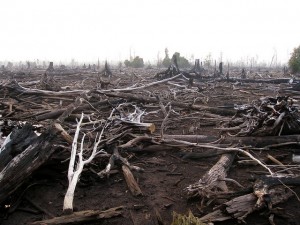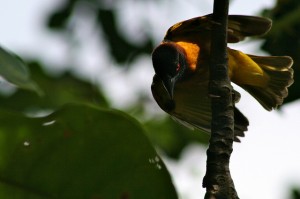The latest highlight for journalists covering environmental issues was without doubt the Pope’s warning to take climate change seriously – some good news with a not so good background. See more news articles on forests, trees and agroforestry below.
LANDSCAPES AND MONEY

More articles cover CIFOR co-organized landscape investment event
Science could spur growth in sustainable industry, titles SciDevNet, while Devex sees the rise of the landscapes agenda.
Trying to follow the money’: Opacity rules in Southeast Asia’s land rush, finds study
As the rush for land in Southeast Asia continues at breakneck speed, often bringing with it social and environmental destruction, a new study by CIFOR explores how well investors really know where their money is going, and the possibilities and limits of existing data in achieving greater accountability.
PALM OIL AND FORESTS
Stop eating Nutella and save the forests, urges French ecology minister
Ségolène Royal says Nutella is made using palm oil, which is contributing to deforestation, and urged Ferrero to make the spread with ‘other ingredients’
Indonesia’s latest logging ban leaves forests at risk – experts
Indonesia’s recent renewal of a ban on new logging permits will not be enough to curb pressures on its forests without stronger enforcement on the ground, researchers and activists say. At the same time the Jakarta Post writes that the government wants to crack down on forest-burning firms, quoting minister Ferry Mursyidan Baldan.

When a forest is burned, what comes back may not resemble what was lost
When a fire sweeps through a forest, or a lumber company strips an area of all of its trees, the greenery will eventually grow back. Or so many forestry researchers thought. But a new study in the tropics suggests that these second-growth forests can look very different from what they replaced—a finding that may cause biologists to wonder what biodiversity will be restored and forestry experts to reconsider how much they should or can intervene in the regrowth.
Looking to beat back encroaching desert, Chile preserves forests
As part of efforts to counteract desertification and erosion brought about by climate change, Chile will invest $250 million to plant vast tracks of native forest, the national forestry agency said on Friday.
Natura 2000 in forests – how to tackle implementation challenges?
Natura 2000 is the core of the EU’s biodiversity conservation policy, with the network of protected areas covering ca. 18% of the EU’s land territory. … comparatively little is known about the implementation of the policy in forests. In a recent article, an international team of researchers led by Dr. Georg Winkel from the University of Freiburg, Germany, has analyzed the implementation of Natura 2000 in forests.
BIODIVERSITY AND ILLEGAL TRAFFICKING
The Earth stands on the brink of its sixth mass extinction and the fault is ours
Life on Earth is in trouble. That much we know. But how bad have things become – and how fast are events moving? How soon, indeed, before the Earth’s biological treasures are trashed, in what will be the sixth great mass extinction event? This is what Gerardo Caballos of the National Autonomous University of Mexico and his colleagues have assessed, in a paper that came out on Friday.
Amazonian biodiversity protects health, livelihoods
…If extreme drought and severe flooding become more frequent with climate change, as some climate models predict, they could affect the diversity of forest vegetation. That could make some game animals scarcer, with an impact on human nutrition and human health that could ripple through several generations. Besides being the main source of protein for villagers in the Amazon region, fish and wild animals provide important micronutrients such as calcium, iron and Vitamin C, according to a study led by Nathalie van Vliet of the Center for International Forestry Research.

New research on illegal wildlife trade
The Washington Post and Wired both cover recent research by veterinary epidemiologist Nikkita Patel from the University of Pennsylvania on illegal wildlife trafficking. He introduces new methods for identifying the most important countries in the illegal wildlife trade network and deciding which ones to target when attempting to break it down. CIFOR’s Jacob Phelps although welcoming the research, criticized the focus on illegal trafficking of large exotic animals, when the big bulk of illegal animal trade consisted of small species such as seahorses and birds get little attention.











